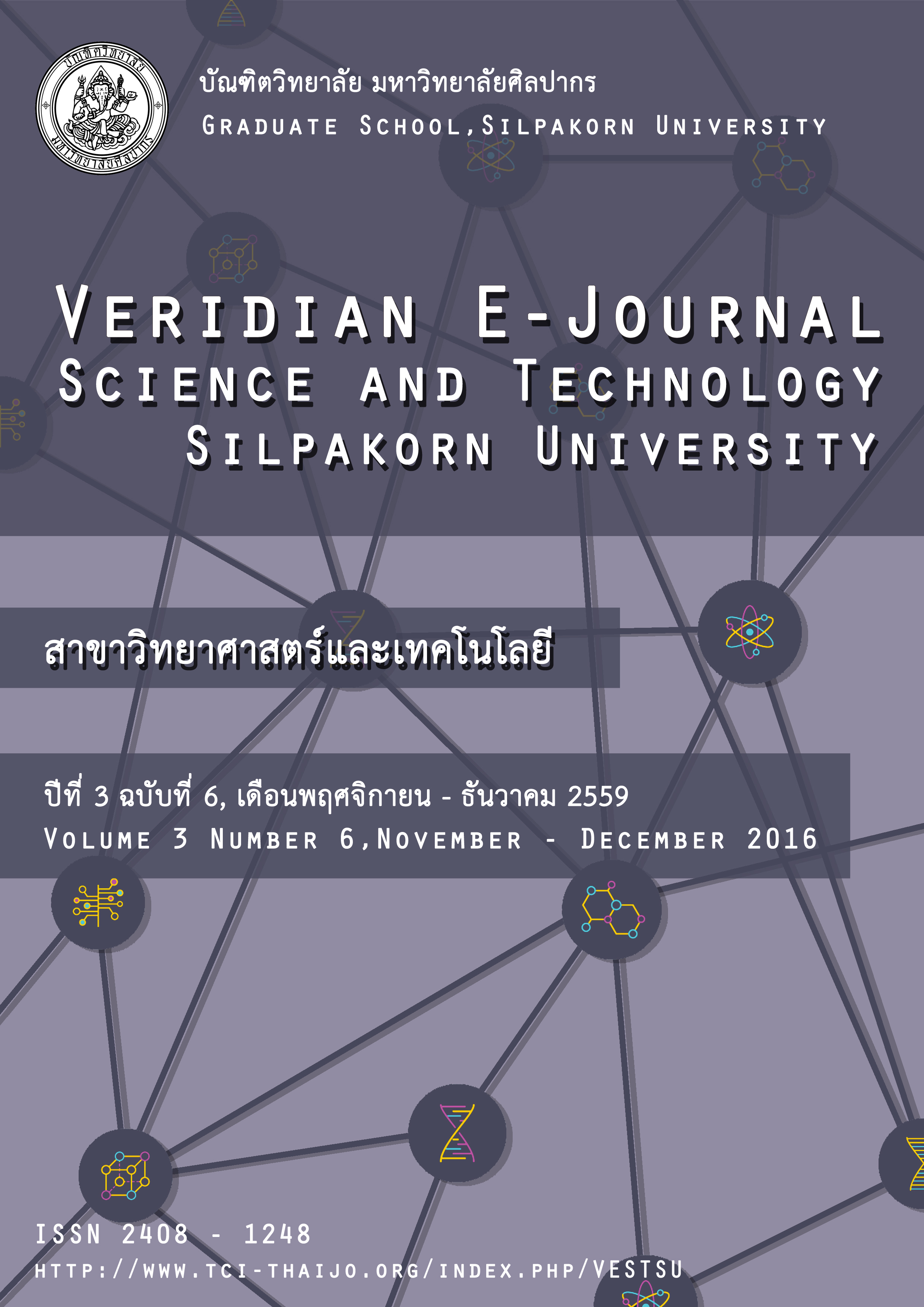การเจริญของชะครามในพื้นที่ดินเค็ม
Main Article Content
Abstract
ชะคราม [Suaeda maritime (L.) Dumort.] อยู่ในวงศ์ Chenopodiaceae เป็นพืชล้มลุกหลายปี แตกพุ่มต่ำ เติบโตและแพร่กระจายตามพื้นที่บริเวณน้ำกร่อยและป่าชายเลน พืชนี้เป็นทั้งพืชอาหาร สมุนไพร และมีส่วนสำคัญในระบบนิเวศป่าชายเลน โดยสามารถทนต่อความเค็มได้ แต่เมื่อเกิดสภาวะโลกร้อนขึ้นย่อมส่งผลต่อการเปลี่ยนแปลงของความเค็มของน้ำทะเลและพื้นที่ที่พืชเจริญเติบโต การศึกษาวิจัยเพื่อเก็บข้อมูลการเจริญจากตัวอย่างพืชที่อาศัยอยู่ในพื้นที่ดินเค็ม บริเวณใกล้หรือมีน้ำทะเลท่วมถึง จึงมีส่วนสำคัญที่อาจใช้เป็นดัชนีบ่งบอกความรุนแรงของผลกระทบที่เกิดจากปัจจัยเปลี่ยนแปลงความเค็มของพื้นที่ ที่ เกิดจากน้ำทะเลได้ จากข้อมูลผลการศึกษาเชิงเปรียบเทียบการเจริญเติบโตของชะคราม ที่ 3 ตำแหน่งระยะห่างจากแหล่งน้ำเค็ม จาก 9 ตำบล ใน 3 จังหวัด (สมุทรสาคร สมุทรสงคราม เพชรบุรี) พบว่า น้ำหนักสดและน้ำหนักแห้งของตัวอย่างที่เก็บมีความแตกต่างกันทางสถิติ
Suaeda maritime (L.) Dumort., a shrubby herbaceous plant in the family Chenopodiaceae. It grows and distributes in marshy and mangrove areas. This plant is edible, used as folk medicine, and playing an important role in mangrove ecology with it property in salinity tolerant. Due to increase of global warming, salinity in sea water and terrestrial areas nearby is changed and affecting plant growth of those places too. The yield data on growth and characters of plants commonly found in these areas may be used as index tool to trend of salinity impact. Results from comparative study on growth of Suaeda maritime in sampling sites with 3 different distances from water source of each of 9 tambon in 3 provinces (Samutsakorn, Samutsongkram, Petchaburi) revealed significant difference in fresh and dry weight of plants.

